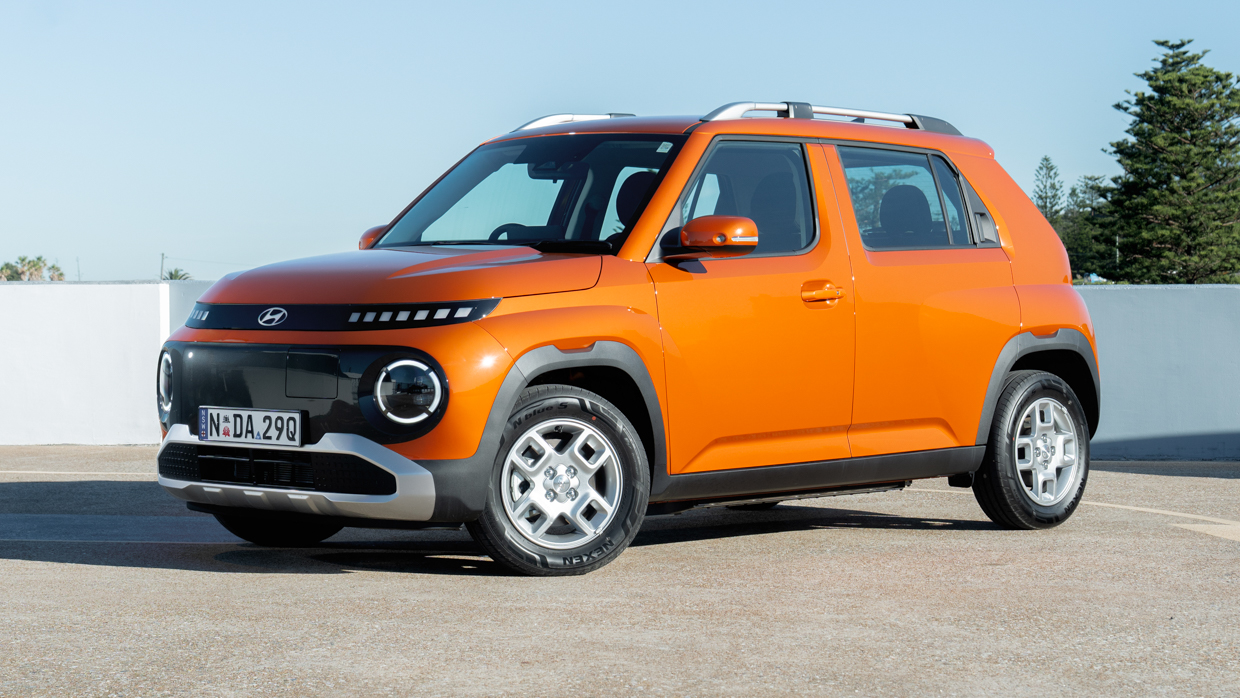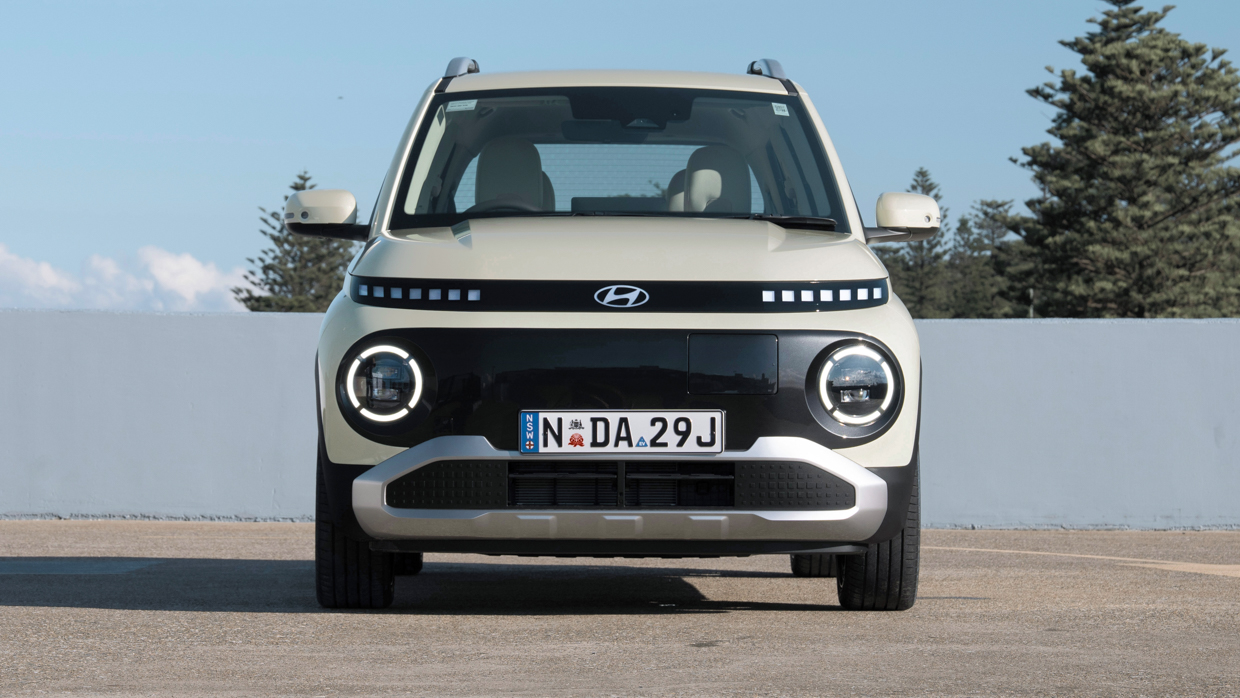-
Car Reviews
- All reviews
- Midsize SUVs
- Small cars
- Utes
- Small SUVs
- Large SUVs
- Large cars
- Sports SUVs
- Sports cars
- Vans
Latest reviews
- Car News
-
Car Comparisons
Latest comparisons
- Chasing Deals
There’s a price to pay for a polished drive and aftersales assurance, Hyundai bosses proclaim when explaining why the Inster is pricier than Chinese rivals.
Once mainstays of Australian roads, light and truly small cars dwindled in popularity for years – until electric power unexpectedly relit their fire, led in recent years by popular models like the MG4 (from $36,990 driveaway) and BYD Dolphin (from $29,990 plus on-road costs).
While Aussies can still buy petrol-fuelled littlies like the MG3, Suzuki Swift, Mazda 2 and Toyota Yaris, their prices have skyrocketed in recent years as safety tech costs have risen. At the same time, sales of such nameplates have fallen, with a rich share of buyers who can afford a small car in the thirty-grand range happy to shift to electric.
And picking up a ‘cheap’, small electric car in Australia has meant buying Chinese—until now. Hyundai, which cut its teeth on starter-pack vehicles like the Excel, Getz and Accent, enters the fray of Australia’s entry-level EVs this month with the new Inster SUV.
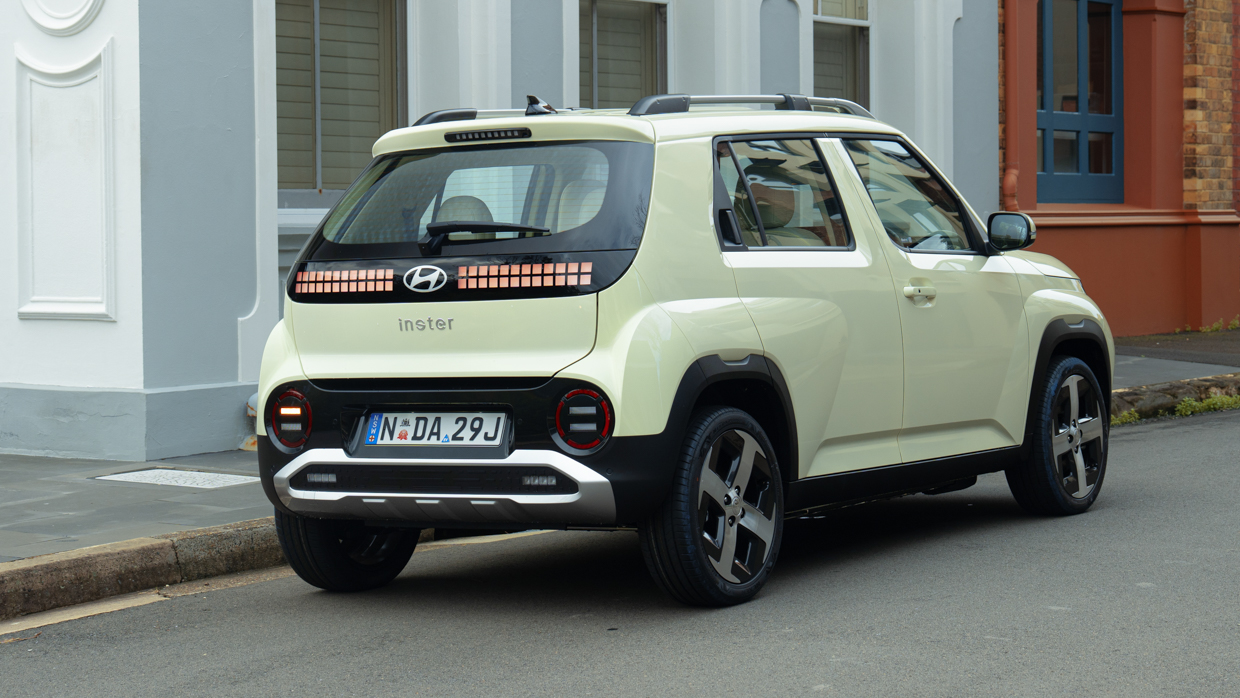
The Inster simply isn’t priced sharply enough to tear volume from strong-selling, PRC upstarts. Three variants commence from $39,000 before on-road costs (about $43K driveaway) – not devilishly expensive, but the Inster needs to shine brightly across the board to justify the price.
Hyundai executives are bullish that the Inster is, simply put, desirable enough. Its maker calls it segment-defying, blending kei car styling, intelligent cabin packaging, sorted driving dynamics and sophisticated technology.
In other words, Hyundai hopes that Australians see through the veneer of quality it feels is associated with some Chinese rivals: the Inster isn’t Dolphin or MG4-cheap (despite the latter being a pretty impressive car), but Hyundai says its car rides and steers properly, that its software is polished, and that warranty coverage and spare parts are dependable.
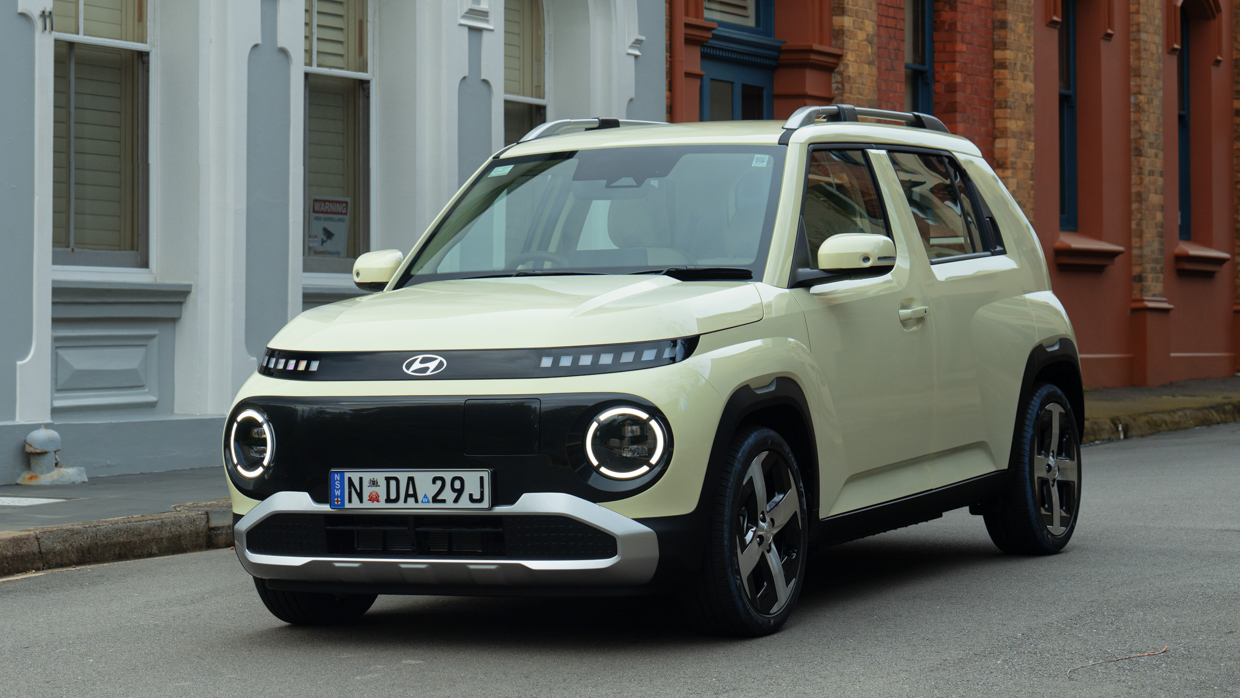
Certainly, our test revealed that the Inster feels much more polished and mature than you might expect from a first look at its cartoonish styling. Compared to some of the buggy vehicles from new brands we drive, it’s a bit of a breath of fresh air.
But is that sorted, straightforward experience worth a steep premium? Should you actually consider splashing up to $9000 more on the Hyundai than a BYD? That question was at the front of our mind for this test.
There’s a reason carmakers splash entry prices on billboards: it’s the factor that often gets buyers in the door (or to the website) for a first squizz. So, how much trouble is the Inster in, price-wise, as it gets out of the blocks? Here is a look at the starting prices of various electric rivals:
| Model | Price | Battery | Range WLTP | Power |
| BYD Dolphin Essential | $29,990 | 44.9kWh | 310km | 70kW |
| GWM Ora Standard Range | $35,990 d/a | 45.4kWh | 310km | 126kW |
| BYD Dolphin Premium | $36,990 | 60.5kWh | 427km | 150kW |
| Chery E5 Urban | $36,990 | 61.0kWh | 430km | 160kW |
| MG4 Excite 51 | $36,990 d/a | 50.8kWh | 350km | 125kW |
| Hyundai Inster | $39,000 | 39.0kWh | 327km | 71kW |
| BYD Atto 3 Essential | $39,990 | 49.9kWh | 345km | 150kW |
| MG S5 Excite 49 | $40,490 d/a | 47.1kWh | 340km | 125kW |
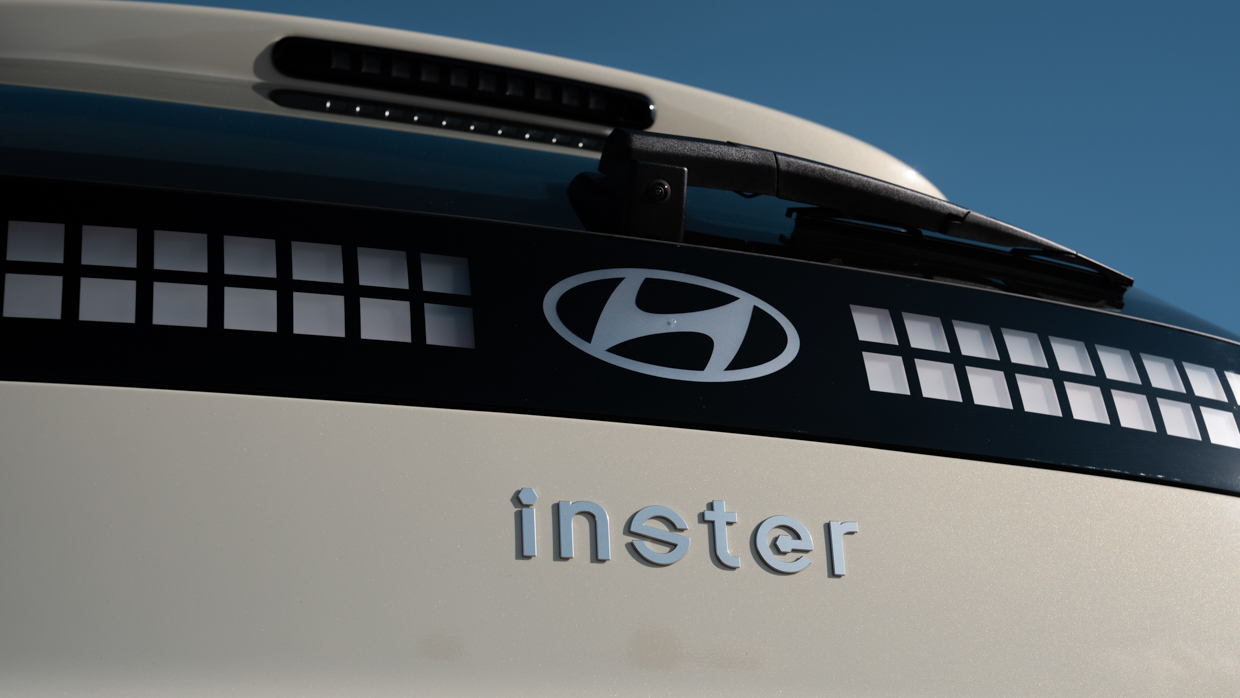
Hyundai also maintains a presence in the petrol-powered light vehicle segment by way of the Venue SUV that is a size larger than Inster, but priced from $25,990 driveaway with manual transmission.
Back in Inster-land, three variants are available to Australians, with relatively beefy standard specification included with the simply-named Inster base grade, which carries the ‘standard range’ 39kWh (usable) battery at $39,000 + ORC:
Pictured: Hyundai Inster Standard Range
Spending $3500 more on the Inster Extended Range adds visual appeal, plus around 70km additional range in the real world:
Pictured: Hyundai Inster Extended Range
Splash a further $2500 on a near fifty grand (driveaway) rugged-style Inster Cross and you pick up the most premium feature set:
Pictured: Hyundai Inster Cross (roof box optioned)
Our test centred around the base model and the Extended Range. While it makes little financial sense to proceed beyond the $39K entry tier, there’s no doubt that the Extended Range, specified with buttercream interior and 17s, looks fantastic.
An electric motor is a massive upgrade for ‘cheap’ (in a relative sense), light cars. If the Inster had a petrol engine (as is available in the Korean-market Hyundai Casper), it would be a slow and noisy buzzbox with a dated four-speed automatic transmission.
Electrification turns out to be hugely democratic, bringing untold levels of refinement to a scrappy segment. As you’d expect from really any EV, the Inster accelerates with silken smoothness and near-silence, with no thrashing or gear-changing to get in the way.
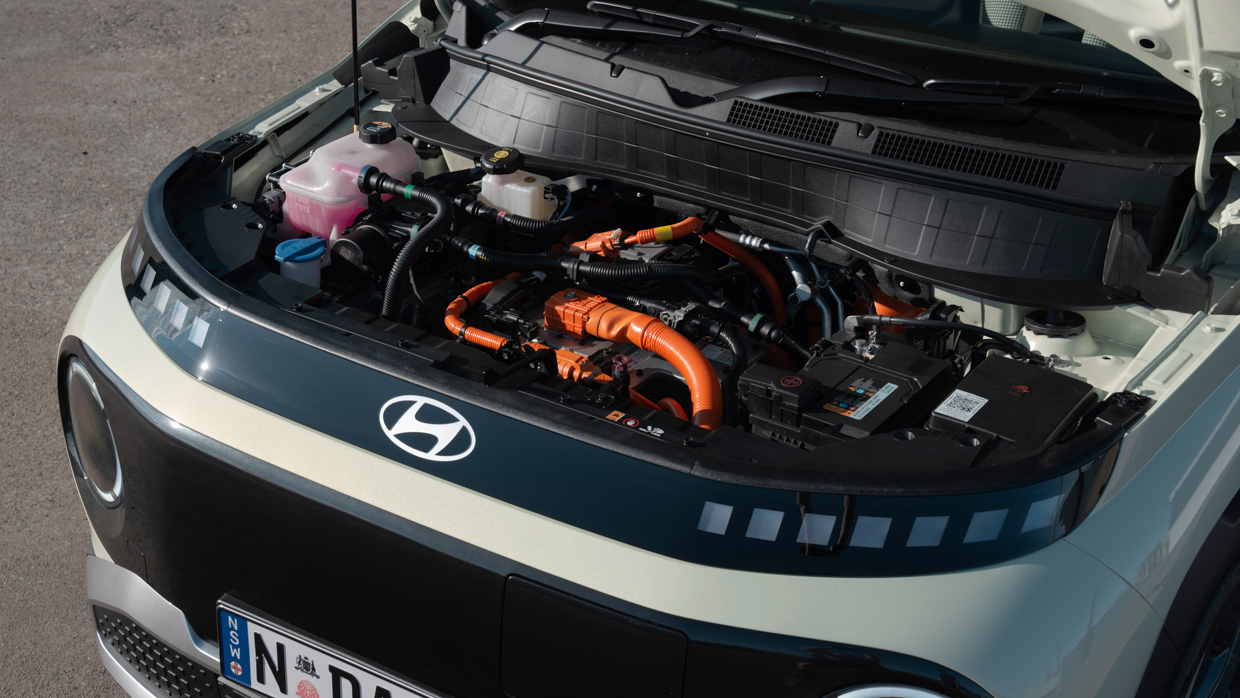
Car fans might shed a tear at the thought, but the fact is most people don’t dream of banging off the rev limiter on their way to work, and the Inster represents a great leap forward from cheap Hyundais of days gone by in this way.
Naturally, you pay for the privilege, with much of the inflated cost of an Inster wrapped up in its 39kWh/46kWh (usable) battery packs that sit beneath the fully-flat floor. The low voltage of the packs (266V/310V) limits power to 71kW/84kW respectively, with torque common at 147Nm for all Insters.
As a result, performance at city speeds is pleasingly rapid – though the car noticeably runs out of puff as you approach triple figures (0-100km/h comes up in 10-11 sec), and overtaking on country roads or the highway requires a bit of planning.
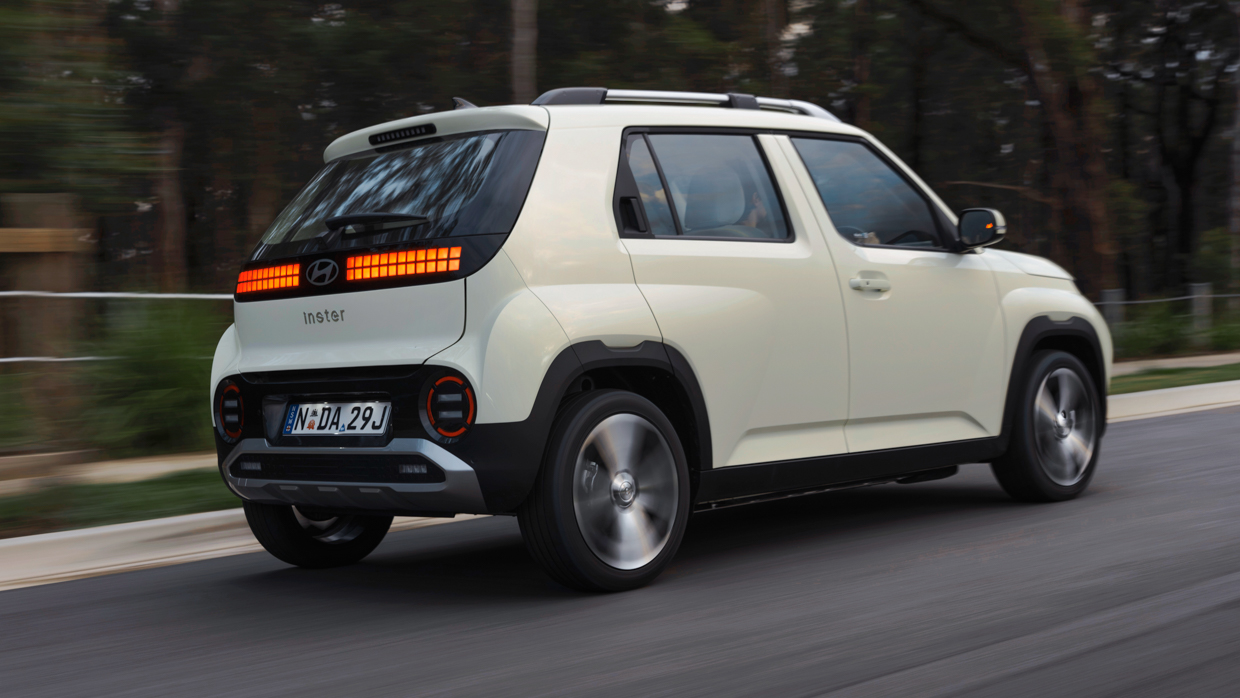
The motor is generally tuned well in both directions, with four-step regenerative braking adjustable through steering wheel paddle shifters all the way to one-pedal drive, though if you prefer to use the brake pedal it has a generally reassuring feel.
Compared to the Inster’s 1060kg petrol-fuelled Casper fraternal twin, the EV is about 300kg heavier – but at circa-1350kg, the Inster is one of the very lightest EVs and in any case, the extra mass sitting atop the 2580mm wheelbase is a blessing in disguise.
That is because the inert battery goes a long way to settling the Inster’s ride and handling, which is inherently limited by the car’s narrow width (1610mm) and diminutive length (3825mm).
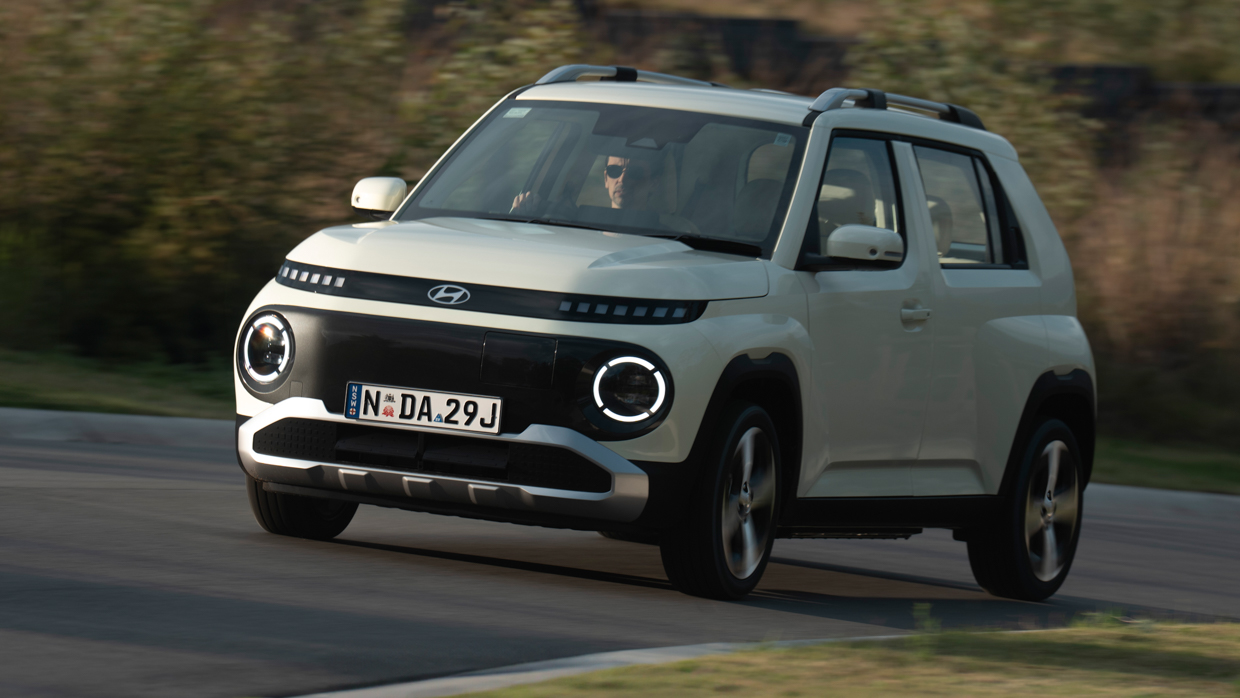
Our launch test loop was very honest, taking in extended bumpy rural segments with alarming potholes…yet the Inster took the imperfections in its stride, never feeling out of its depth until the rain started and the base grade’s 195-width tyres started feeling skittish.
That effect is less pronounced on the Extended Range’s larger wheel/tyre package, which offers more grip, and in the dry, keen drivers can punt the Inster with considerable confidence as the true steering rack and communicative chassis eat up the road.
Even the ride is acceptable, especially on the base 15-inch wheels (with additional cushioning) – while the Extended Range’s 17s are clearly lower-profile and serve up more brittle responses to expansion joints it’s never too bad.
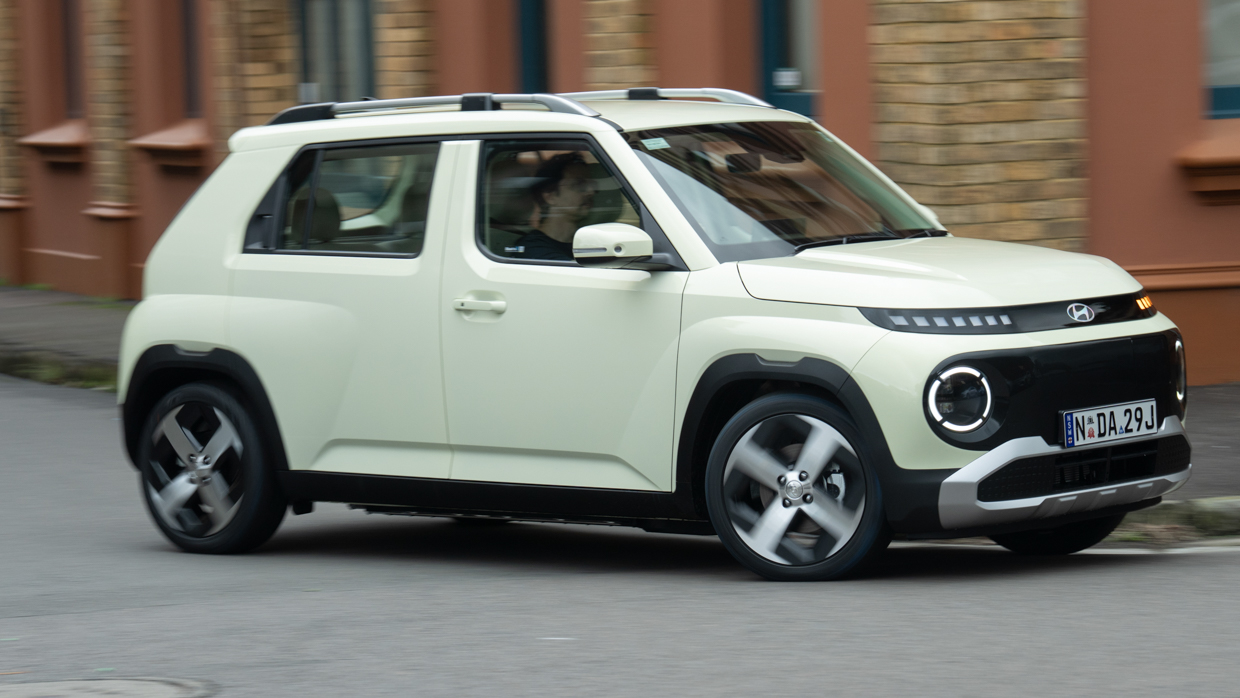
Visibility out of the tall glasshouse is superb, while road noise levels are a touch inflated despite fitment of extended noise insulation material. Something had to give, we suppose.
Beyond reassuringly adept handling, the other reason you might convince yourself to part with considerable extra cash over a Chinese competitor is the Inster’s beautifully-executed interior.
It’s not especially pretty, or cutting edge, or modern in here. Instead, the Hyundai’s cabin simply works exactly as you’d expect, combining the right level of technology with the right level of physical switchgear for climate, media and driving controls.
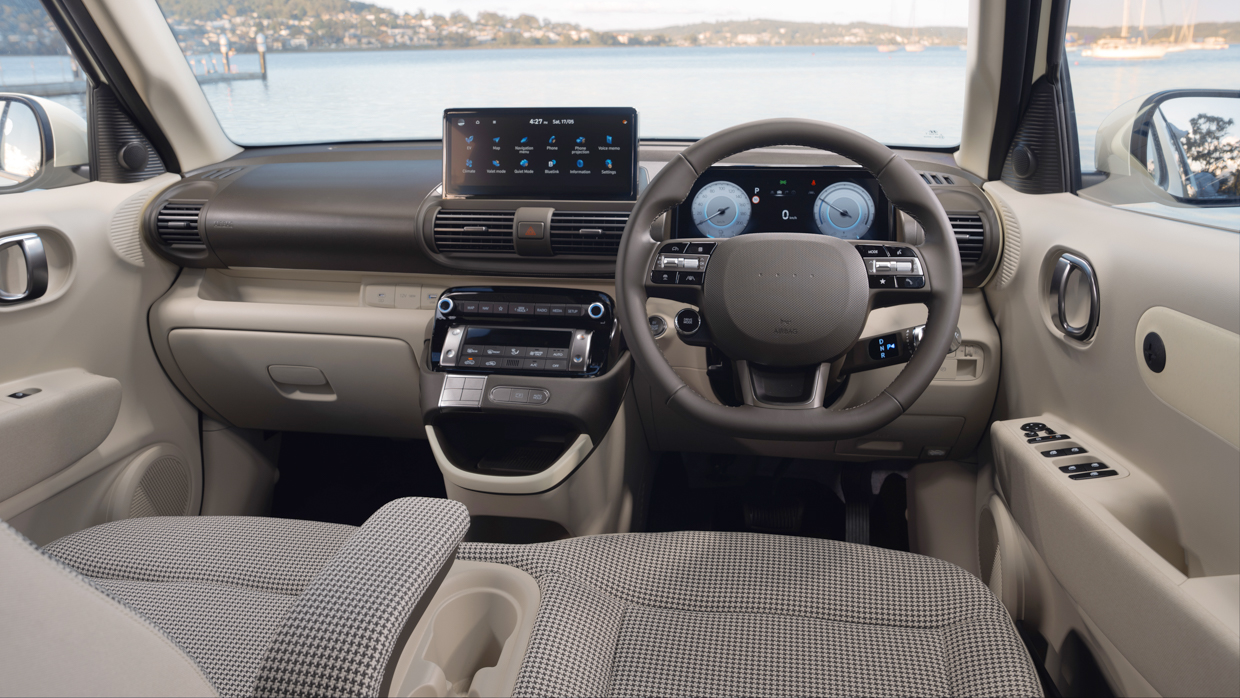
Once your phone is connected to standard CarPlay/Android Auto, presented on the leftmost of two clear 10.0-inch screens, there is next to no learning curve here as the Inster makes life so easy, with key controls falling right to hand. It’s the antithesis of confronting or odd.
Want to adjust the fan while driving? There’s a rocker for that. Volume? The dial doesn’t move places. Schedule overnight charging? Easy with Hyundai’s slick software, while impressively, all Insters get five years of complimentary vehicle networking with locking, charging and climate functions remotely controllable from your phone.
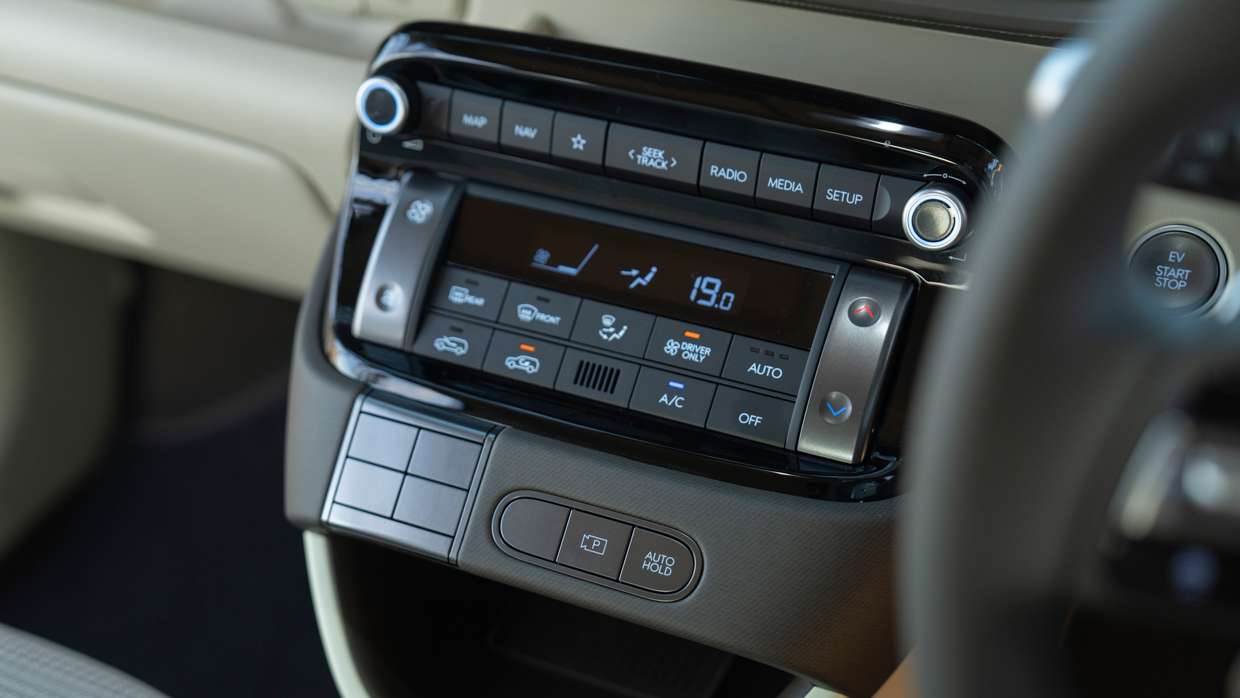
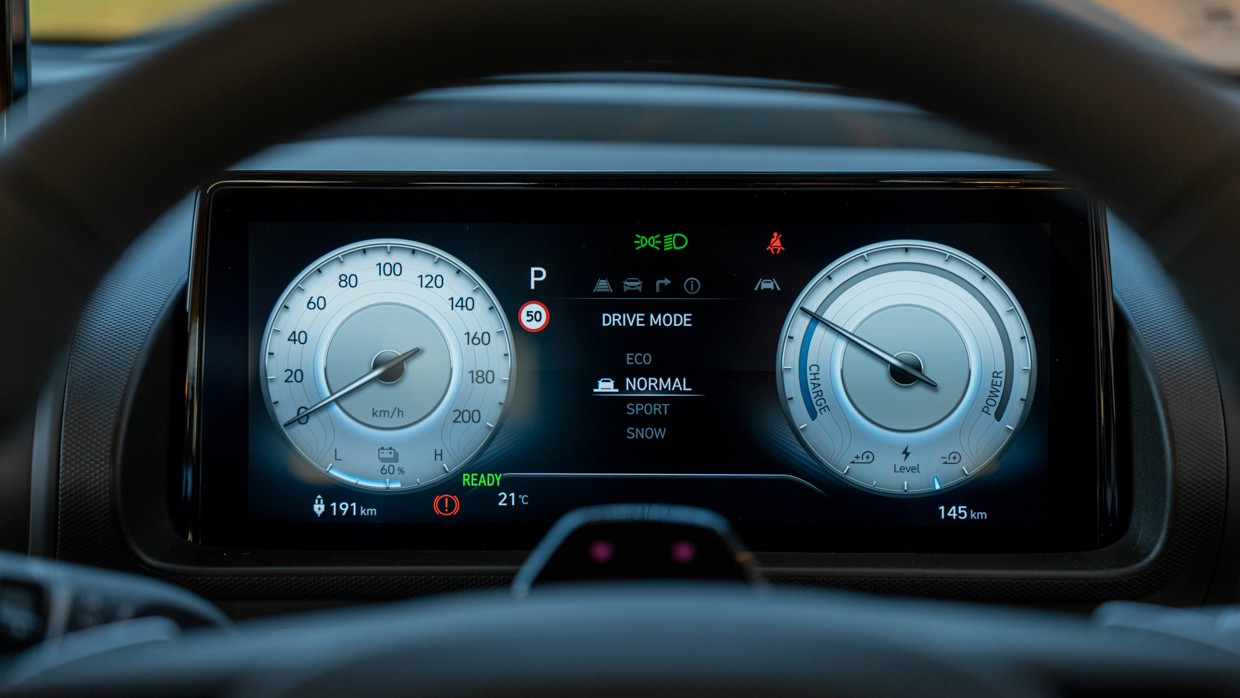
Once you’re done marvelling at how a new car in 2025 (and an electric one at that) doesn’t have to resemble a touchscreen-driven spaceship inside, a few shortcomings start to become clear.
A big one is that, while Hyundai Australia has lavished quite decent specification on the Inster for local consumption, it doesn’t feel plush or posh in here as petrol cars of the same price do – we’re in Volkswagen Golf territory here, which isn’t an EV (yet) but features much nicer plastics and surfacing.
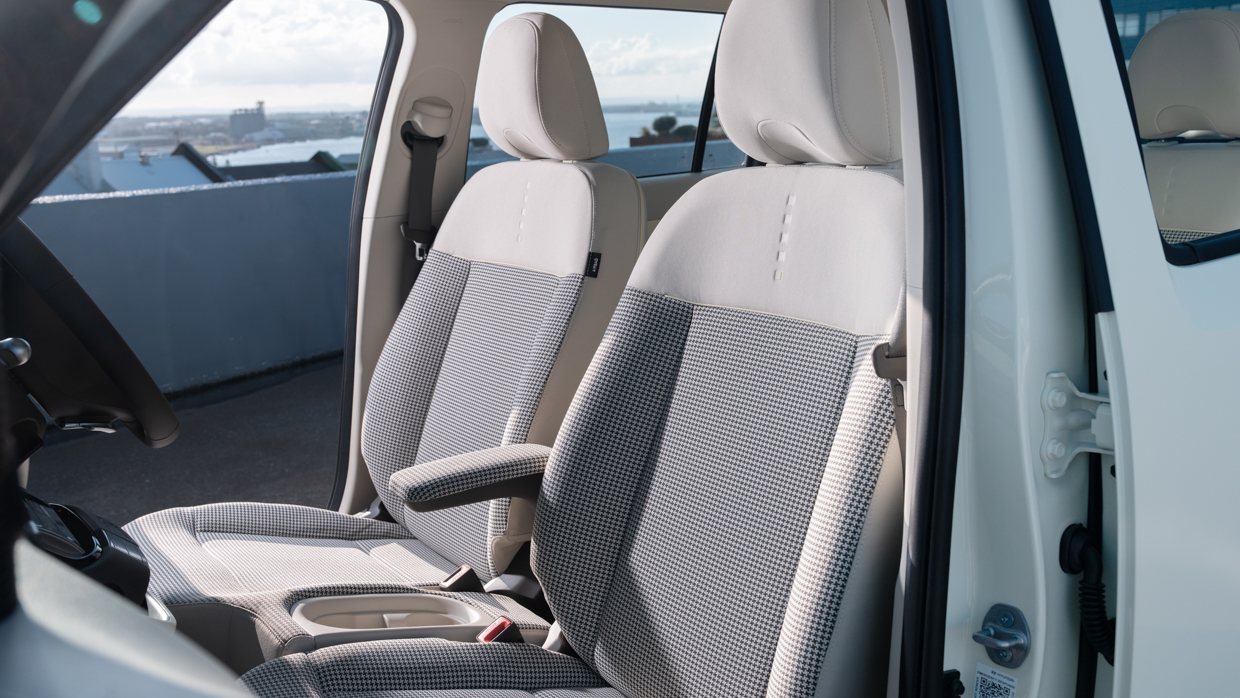
Same with the seats: the front bench seat (with flip-down armrest) is absolutely fine for short trips or even a couple of hours in the car, but the lack of lumbar and only simple manual adjustments mean finding a great driving position is tough.
The narrowness of the Inster confines it to four seats only, and robs the doors of storage room – but at least there are plentiful opportunities to stash clutter in open boxes throughout the dash stack.

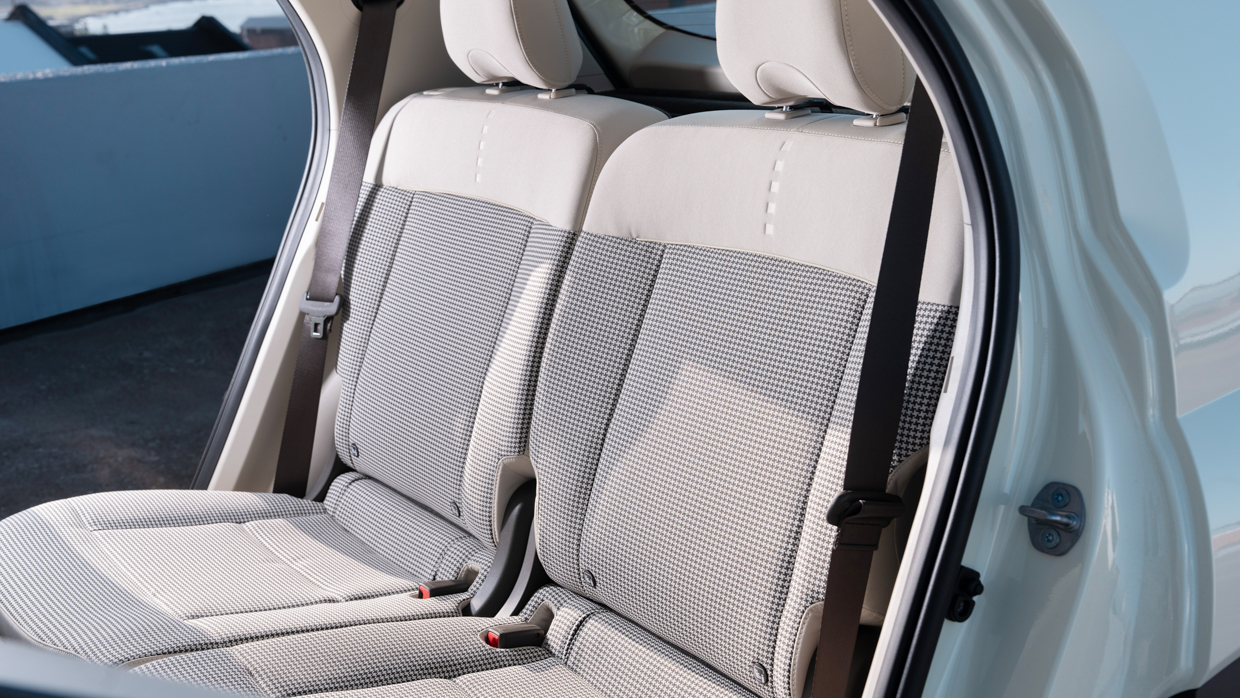
Row two is amazingly accommodating if the seats are slid/relined into their rearmost position, easily swallowing adults – or you can bring the seats forward to maximse the boot (to 351L). No air vents or armrest, though, so back passengers are certainly second-class.
The back seats fold flat (50/50), while opting for the Inster Cross also allows the front pews to fold flat too – and an accessory mattress can be placed allowing two to camp in-car.
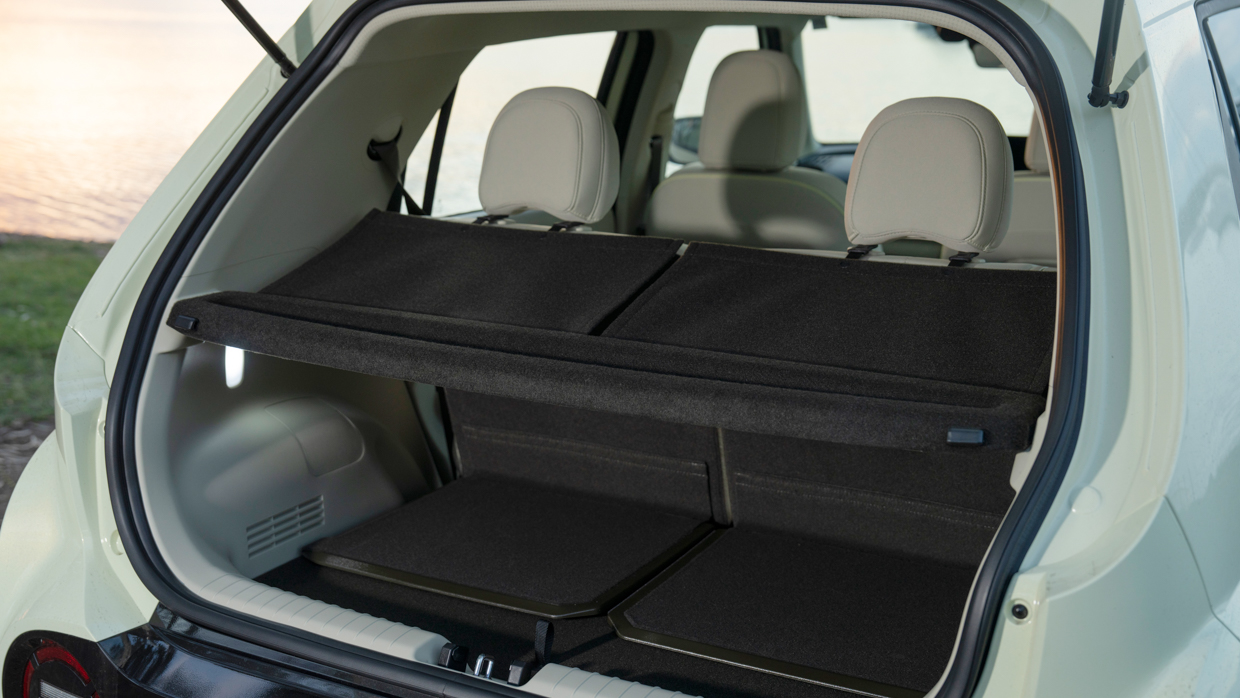
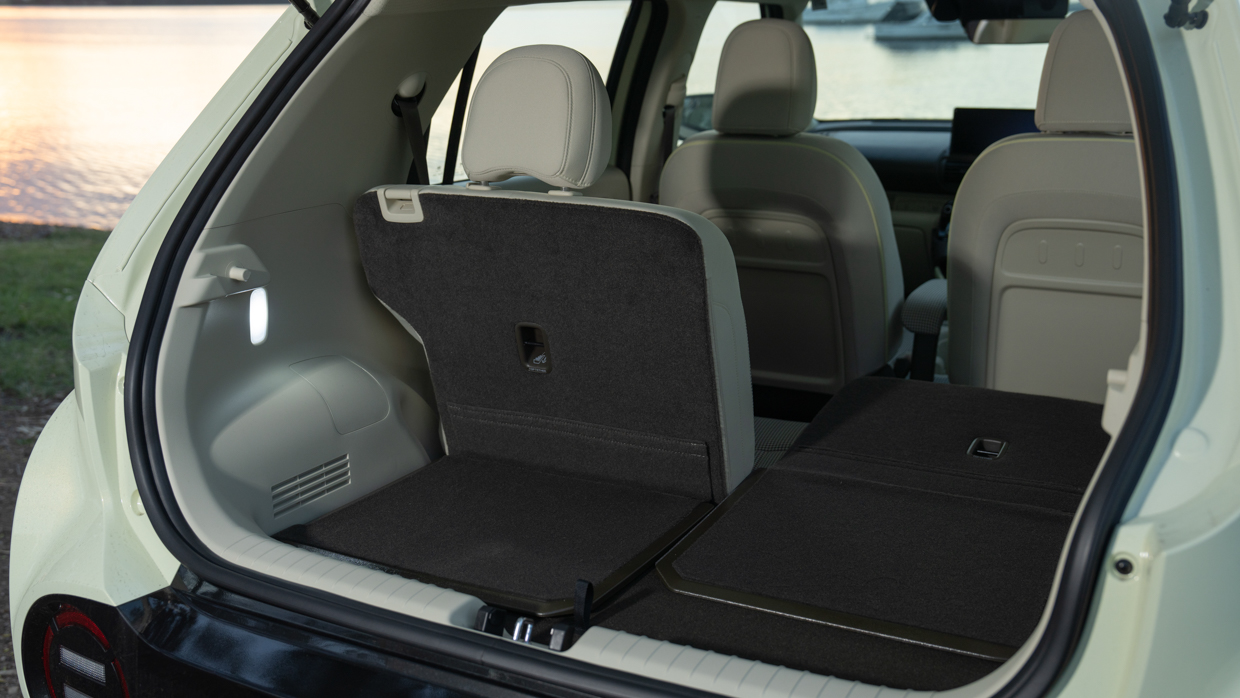
Neither Euro NCAP nor ANCAP have rated the Inster’s safety credentials as yet and Hyundai executives won’t be drawn on whether it will receive five stars – but the manufacturer says it is happy to give ANCAP a car if they want to test an Inster.
What is known is that the level of safety tech in the Inster is fairly extensive, and most of the systems we tested worked well.
Forwards and junction AEB is standard across the range, though only the Cross scores reversing AEB – a black mark – while Cross exclusives also extend to a 360-degree parking camera and Hyundai’s excellent blind spot view cameras.
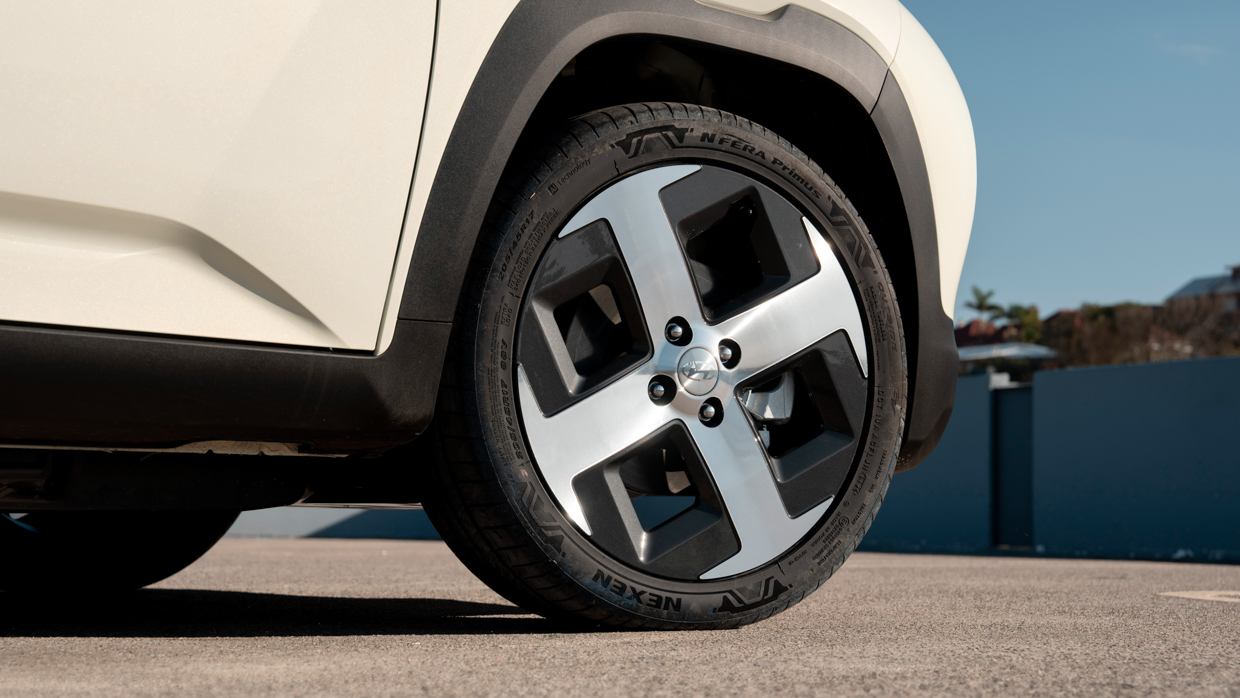
Otherwise, all specs enjoy strong adaptive cruise control and lane-centring, which works well. Hyundai’s overzealous speed limit monitoring is still there, but can now be silenced with a long press of the ‘mute’ button on the steering wheel.
Overzealous is also the word for the constant driver monitoring, and this is harder to deactivate each drive.
Low running costs are the order of the day for the Inster because it is very efficient – equalling the Tesla Model Y as the most miserly EV we have tested (though the Tesla is admittedly even more impressive as it’s so much larger).
We easily managed 11.0kWh/100km consumption from the Extended Range in town, while sportier country driving saw the figure escalate to 12kWh/100km; the highway sees use of a more mediocre 15.5kWh/100km.
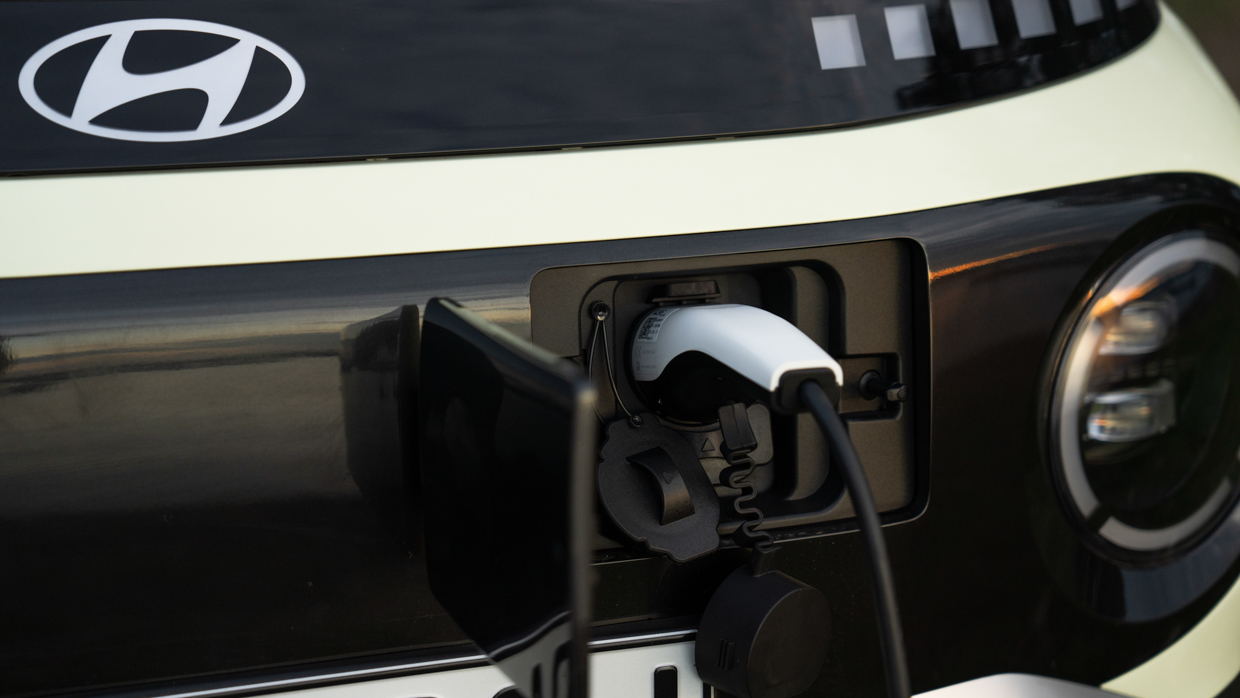
Efficiency did not differ much between the battery sizes, meaning real-world range to exhaustion of between 296km-418km for the Extended Range and 232km-327km for the base car. We haven’t tested the Cross properly yet, but its optional roof box is understood to cut range by 30 percent or so.
DC charging speeds peak at a decent 120kW, while a 10-80% session averages 64kW and takes 30 minutes. AC charging can be done at up to 11kW; a simple GPO socket will replenish half the battery overnight.
Warranty is five years with unlimited kilometres, though Chasing Cars understands that Hyundai is on the cusp of announcing a move to a seven-year warranty which will be backdated to all cars the brand has sold in 2025.
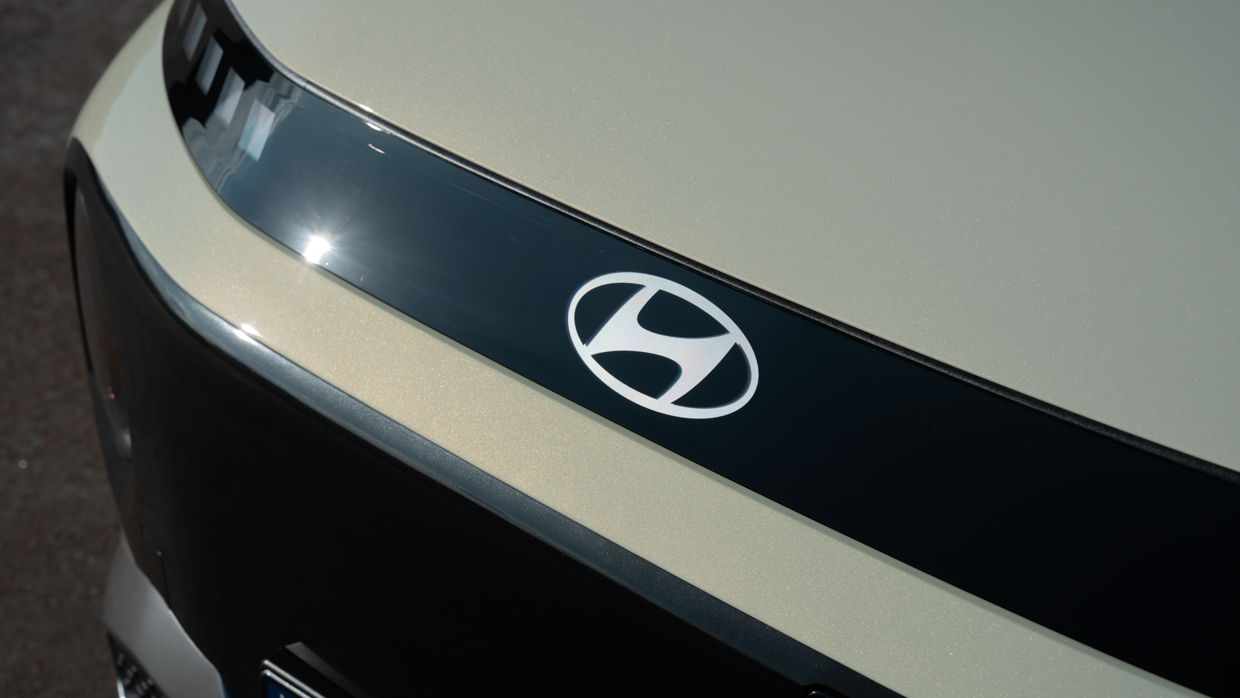
Service intervals for Inster are every two years/30,000km, with the first two services confirmed to cost $655 apiece.
If you’re motivated by price alone in the ‘cheap and cheerful’ small EV segment, then the Inster isn’t likely to catch your fancy unless Hyundai starts indulging in discounting. For now, brand execs are adamant they don’t want to do so.
However, if you can look beyond the premium sticker price, the Hyundai Inster is seriously impressive. Here’s a fully-electric car that delivers incredible efficiency, light weight, a straightforward and ergonomic interior, and dynamics far more polished than you would expect.
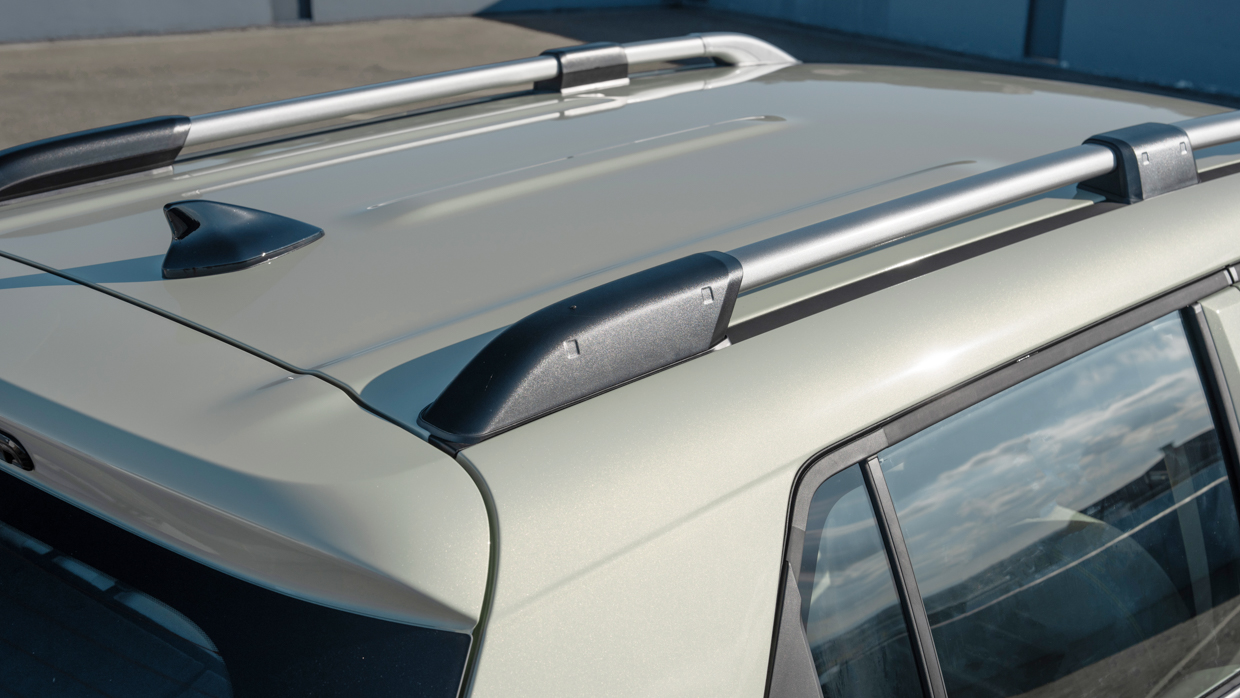
Hyundai bosses declare that the maturity embodied in those achievements costs money, and that Australians who ‘get it’ will be willing to spend a bit more on an Inster than they would on a less dependable, lesser known car from rival brands.
We agree that the Inster justifiably costs a bit more than a BYD Dolphin, for instance. But $9000 more might be a little too steep. At the time of writing, the right price for the Inster is closer to the mid-thirties than the low-forties driveaway.
Still, if you’re buying an Inster to keep for some time (perhaps as a car for your kids to share, or to have as a second vehicle in the garage), it could well make sense to splash a bit more on quality – because frankly, that’s what Hyundai appears to have delivered.
Key specs (as tested)
About Chasing cars
Chasing Cars reviews are 100% independent.
Because we are powered by Budget Direct Insurance, we don’t receive advertising or sales revenue from car manufacturers.
We’re truly independent – giving you Australia’s best car reviews.
The estimate provided does not take into account your personal circumstances but is intended to give a general indication of the cost of insurance, in order to obtain a complete quote, please visit www.budgetdirect.com.au. Estimate includes 15%^ online discount.
^Conditions Apply
Budget Direct Insurance arranged by Auto & General Services Pty Ltd ACN 003 617 909(AGS) AFSL 241 411, for and on behalf of the insurer, Auto & General Insurance Company Limited(ABN 42 111 586 353, AFSL 285 571).Because we don’t know your financial needs, we can’t advise you if this insurance will suit you. You should consider your needs and the Product Disclosure Statement before making a decision to buy insurance. Terms and conditions apply.
Indicative quote based on assumptions including postcode , 40 year old male with no offences, licence suspensions or claims in the last 5 years, a NCD Rating 1 and no younger drivers listed. White car, driven up to 10,000kms a year, unfinanced, with no modifications, factory options and/or non-standard accessories, private use only and garaged at night.
^Online Discounts Terms & Conditions
1. Discounts apply to the premium paid for a new Budget Direct Gold Comprehensive Car Insurance, Third Party Property Only or Third Party Property, Fire & Theft Insurance policy initiated online on or after 29 March 2017. Discounts do not apply to optional Roadside Assistance.
2. Discounts do not apply to any renewal offer of insurance.
3. Discounts only apply to the insurance portion of the premium. Discounts are applied before government charges, taxes, levies and fees, including instalment processing fees (as applicable). The full extent of discounts may therefore be impacted.
4. We reserve the right to change the offer without notice.
